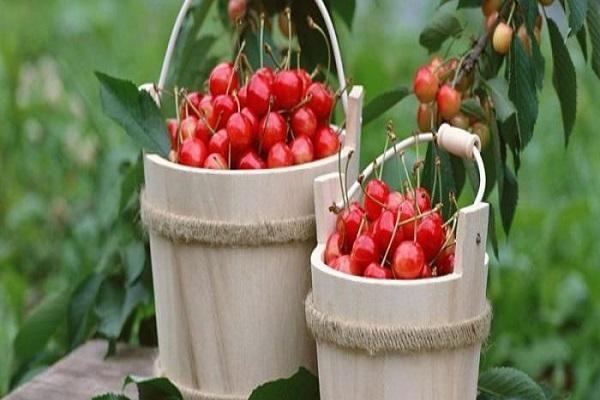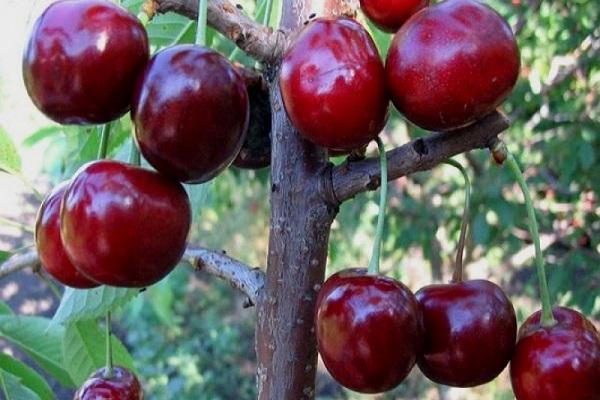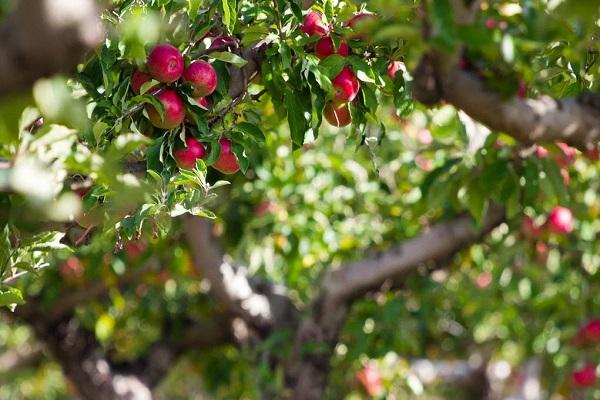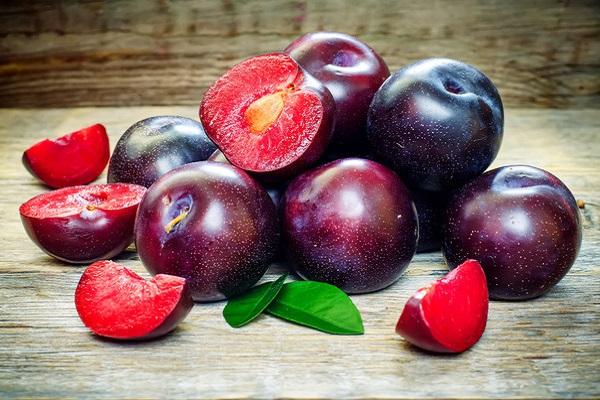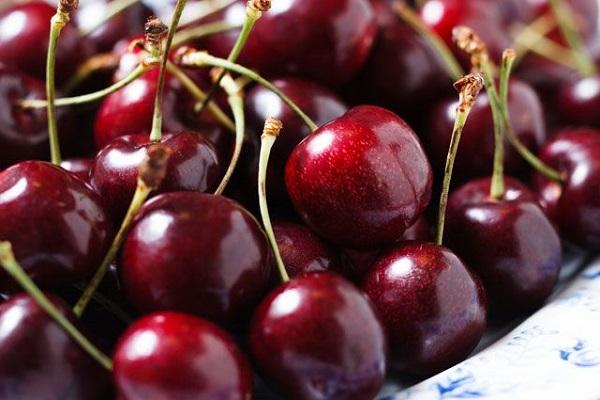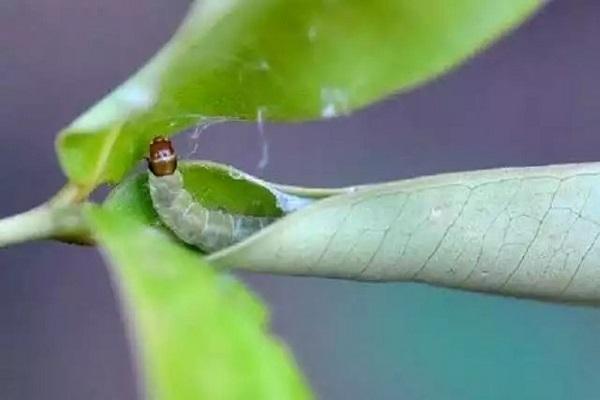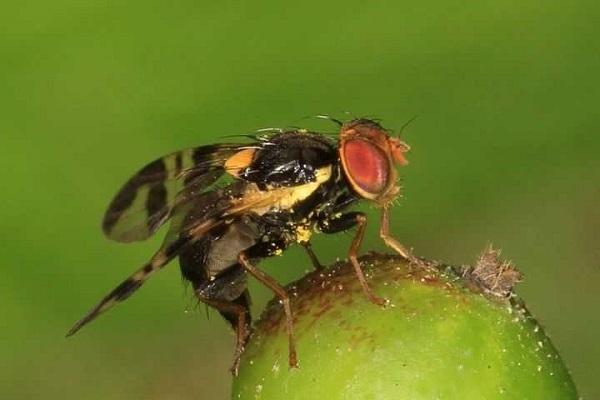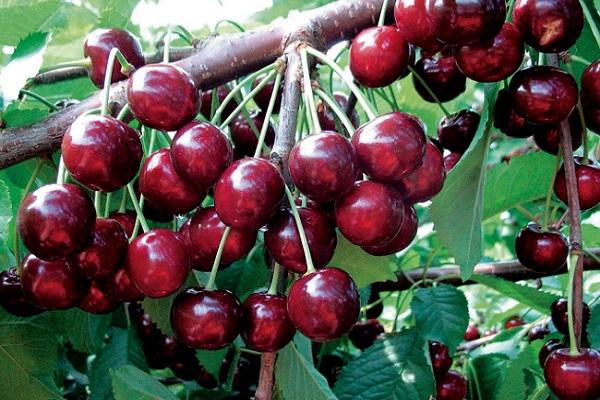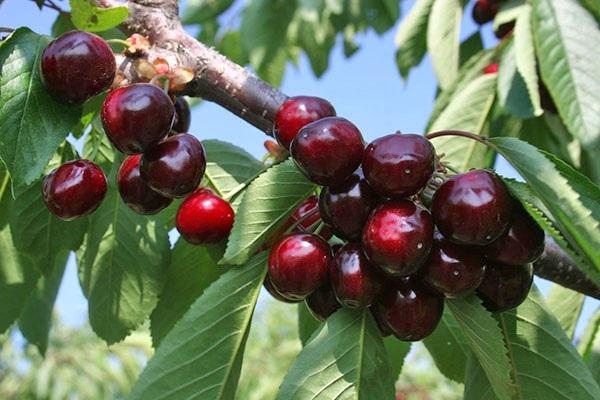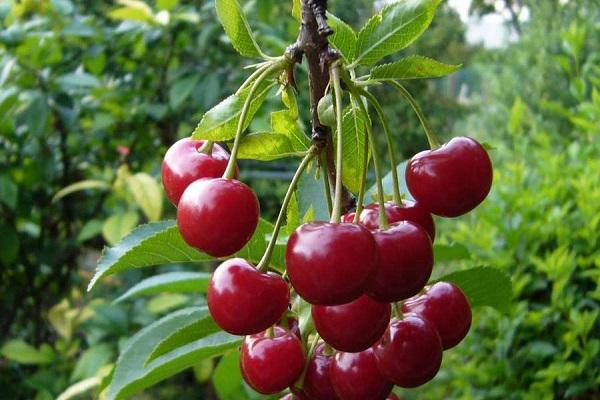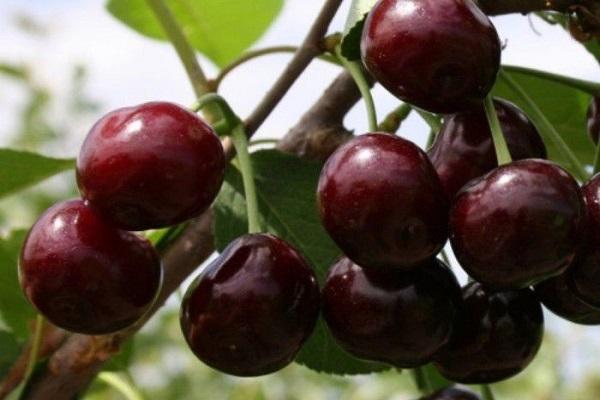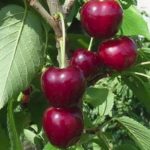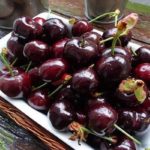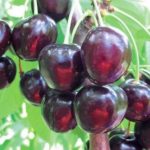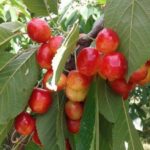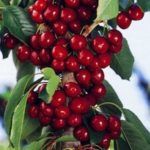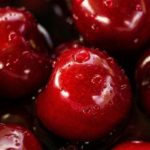Heat-loving fruit trees in the Soviet Union were planted in Moldova and Ukraine, the Krasnodar Territory and Voronezh, where berries and fruits were grown on an industrial basis. Neither cherries, nor apricots, nor peaches took root in mid-latitudes. Russian breeders decided to breed fruit trees that would not require a lot of sun and could withstand frost. The work was carried out for years, but cherry varieties were created that produce a harvest in the Leningrad region, although they were not included in the State Register.
- Features of growing trees in the Northwestern region
- Self-fertile
- short
- Winter-hardy
- How to plant correctly
- Selecting a location
- Bad neighbors
- Apple tree
- Pear
- Plum
- Digging a hole
- Landing
- Transportation
- Growing Tips
- Fertilizer
- Trimming
- Diseases and pests
- Harvest rationing
- How to choose seedlings
- The best varieties
- Seda
- Ugra
- Red dense
- Leningradskaya pink
- Muscat
- Chermashnaya
- Valery Chkalov
- Leningradskaya black
- Knight
- Revna
- Gift for Stepanov
- Zorka
- Leningrad yellow
- Bryanochka
- Fatezh
- Tyutchevka
- And the way
- Reviews
Features of growing trees in the Northwestern region
In winter, in the vicinity of St. Petersburg, and throughout the entire region, there are no severe frosts; it is softened by the proximity to the sea. In summer the weather changes dramatically and it often rains. A serious obstacle to the cultivation of cherries in the North-West was that most varieties did not pollinate on their own, and in order for the tree to bear fruit, it was necessary to plant at least 2 winter-hardy berry plants.
Self-fertile
The ovary on fruit trees is abundant when the temperature remains the same, there are no sudden changes, and the weather is dry. For self-fertile varieties, the proximity of pollinators is not necessary, but when several trees are planted nearby, the yield increases significantly. Cherries are taking root in the Leningrad region:
- Horny goat weed. Pleases with burgundy-colored berries with sweet and juicy pulp. The plant is not afraid of frost, but cannot withstand prolonged drought.
- Hotel. The rootstock for the variety created by Belarusian breeders is cherry. On a tree that is resistant to disease, orange fruits ripen with an average weight of 6 g.
- Astakhov's favorite. The culture develops quickly and produces a stable harvest of large burgundy cherries. Individual berries weigh more than 8 g.
In the Leningrad region, the early Bereket variety is planted, the flowers of which do not require the proximity of pollinators. The tree can withstand cold winters, but suffers from moniliosis.
short
In the North-West, it is better to plant low cherries up to 3.5 m tall. Such plants are easier to care for and easier to treat against pests. The cuttings are grown on a dwarf rootstock, and the tree, barely reaching 2.5 m in height, tolerates severe frosts without problems. Berries on cherries are laid in the 4th year, but after 10 the rootstock needs to be changed.
In the Leningrad region, the Ovstuzhenka variety feels comfortable. In gratitude for the care, the tree rewards with dark red berries that do not crack in wet weather. short Raditsa cherry produces a harvest of large and sweet fruits and is immune to fungal infections caused by ascomycetes.
Winter-hardy
Although southern crops love warmth, Russian breeders managed to create hybrid varieties that do not die in short-term frosts up to 32 ° C. In the North-West, in the fall, cherries are watered abundantly, the trunk circle is covered with peat, spruce branches, and humus.
The Zorka variety has increased winter hardiness. On a tall tree, small orange berries will ripen early. Withstands very low temperatures:
- Bryanochka;
- Tyutchevka;
- Leningrad yellow.
Beautiful and tall tree Fatezh cherriesIn addition to winter hardiness, it is immune to fungal infections. The sweet, red-orange berries have a sour taste.
How to plant correctly
In order for the tree to develop and the fruits to ripen, it must be placed in an area where the heat-loving crop will be comfortable.
Selecting a location
Sweet cherries require light and bear fruit well if grown in the sun. When placing a seedling, you need to ensure that shadows from other trees do not fall on it. For a heat-loving crop, it is advisable to choose a place on a southern slope, closed from northern winds.The fruit plant does not take root in lowlands, swampy areas where cold air accumulates.
Bad neighbors
It is better to plant cherries, even of a self-fertile variety, next to the same stone fruit crop as itself.
Apple tree
Many summer residents place plants on the site without taking into account compatibility. The leaves of trees and shrubs release components that can deplete the soil and change its composition. The apple tree takes away nutrients and moisture from the cherry, preventing it from growing and developing.
Pear
Stone fruits should not be placed near fruit trees whose roots secrete a large number of compounds. They do not get along well with pear trees.
Plum
The cherry develops normally, grows and bears fruit in the vicinity of the cherry, which acts as a pollinator, and with rowan; a lot of berries are laid and everything ripens. It is not recommended to plant plums together with southern crops, which have a weaker root system.
Digging a hole
Sweet cherries love loose soil and do not survive in areas where water comes close to the surface. The pit for the tree should stand for a month or 3 weeks. If planting is done in the spring, in the fall you need to dig a hole to a depth of 60 cm and a diameter of about a meter. Fertile soil is combined with 2 buckets of humus, 60–80 g of potassium salt and superphosphate are added. The pit is filled 2/3 with the mixture and watered.
Landing
Cherries are placed at a distance of 5 meters from fruit crops. The leaves of the tree are torn off, the roots are lowered into water for about 6 hours. A small mound is made at the bottom of the hole, a seedling is placed vertically on it, and soil is sprinkled on top. The soil is compacted and watered abundantly. The tree trunk circle is covered with mulch.
Transportation
Seedlings must be purchased from a nursery or nature reserve.Sweet cherries are grafted onto Vladimir cherries or other varieties that are not afraid of the cold. A tree a year or two old takes root well. For transportation over long distances, the roots are wrapped in wet newspapers in 3-4 layers, packed in plastic film or simply covered with sphagnum moss.
Growing Tips
If you select winter-hardy varieties, plant cherries in a place favorable for them, carefully care for them, protect them from pests, and carry out disease prevention, it is quite possible to harvest a harvest of sweet and aromatic berries even in the North-West.
Fertilizer
Since minerals are poured into the hole when planting cherries along with humus, the tree is fed for the first time after a year or two. In the spring, water with diluted rotted manure or fertilize by dissolving 2 tbsp in a bucket of water. spoons of urea.
When flowers appear on the cherry tree, add potassium salt with superphosphate in liquid form. Once every three years, the soil in the tree trunk circle is dug up and compost or humus is incorporated into the soil.
Trimming
In the spring, 3 weeks after planting the tree, the side branches and top are shortened by half. The central trunk is made 20 cm longer than the other shoots. The cherry tree has a crown of 2 or 4 tiers, consisting of 3 branches. Every year, weak growths are cut out and dry and broken shoots are removed.
Severe frosts lead to the death of buds. Only when the leaves bloom do they get rid of the frozen branches. The cut areas are covered with garden varnish or paste. Affected trees are fed with fertilizers containing nitrogen.
Diseases and pests
Varieties bred for cultivation in cool climates are immune to viruses, but in wet weather they are affected by fungi that cause hole spotting and gray rot.To prevent the activation of pathogenic microorganisms, after flowering the trees are sprayed with Bordeaux mixture or copper sulfate. The second processing begins by collecting the berries.
To prevent hole spot in early spring, cherries are sprayed with Nitrafen.
Stone fruits growing in the cool climate of the Northwest are subject to attack by:
- sawflies;
- leaf roller;
- cherry flies.
To cope with harmful insects, in early spring and several more times the trees are sprayed with insecticides - “Iskra”, “Aktellik”, and treated with “Karbofos”. Nets, stuffed animals, and shiny disks that hang on trees help protect the berries from starlings and sparrows.
Harvest rationing
In the Leningrad region, the fruits of stone fruit crops do not always have time to ripen. To speed up the ripening of cherries, cut off the excess ovary. The first flowers that appear on young plants are completely removed.
How to choose seedlings
When buying a tree to grow in your summer cottage or yard, you need to carefully consider it. You need to purchase cherries with a smooth, even trunk and root collar without damage. The leaves should be free of stains, plaque, and traces of insects. It is necessary to buy fruit trees that are adapted to the local climate.
The best varieties
Cold-resistant cherries created by Russian breeders for cultivation in mid-latitudes are suitable for planting in the Leningrad region.
Seda
The variety, whose fruits ripen at the end of July, is not afraid of diseases and does not really attract pests. On a tall tree with a ball-like crown, berries with shiny dark red skin ripen.
Ugra
Medium-sized cherries delight with sweet and sour small heart-shaped fruits. The plant has a flat shape and can withstand frost and slush.
Red dense
The tall tree tolerates low temperatures normally, but is affected by fungal diseases. Yellow berries with a beautiful blush weigh a little less than 5 g.
Leningradskaya pink
A tall tree, the branches of which form a dense crown, begins to bear fruit after 5 years and requires pollinators. Cherries ripen in mid-summer and acquire a beautiful pink hue. Up to 2 buckets of berries weighing a little more than 3 grams are picked from one tree.
Muscat
By crossing the Severnaya and Pobeda varieties, breeders created a winter-hardy cherry that bears fruit well on wild cherry rootstock. The almost black, heart-shaped berries have a sweet taste and aroma of nutmeg.
Chermashnaya
The trunk and branches of a tree of medium height are not afraid of frost. The variety bears fruit well in temperate climates; with the right choice of location, it produces good harvests in the North-West. The yellow berries are picked in June. They weigh 4.5–4.7 g and have juicy and sweet flesh.
Valery Chkalov
Early ripening cherries, bred in the 50s, are still popular among summer residents and gardeners. A tree with a pyramidal crown grows up to 6 meters in height. The weight of dark red berries reaches 8 g. The branches can withstand low temperatures, but the buds freeze slightly at 23 ° C below zero.
Leningradskaya black
A tree with a spreading crown begins to bear fruit already in the 3rd year. Berries weighing up to 3.5 g when ripe acquire a dark cherry or almost black color. They are used to make compotes, juices and tinctures.
Knight
Sweet cherries, created on the basis of the Valery Chkalov variety in Belarus, are distinguished by high yields and resistance to frost. The dark red small fruits have juicy flesh and are ripe by mid-July.
Revna
Sweet cherries with a pyramidal crown are immune to fungal diseases and tolerate cold and damp weather. Dark red berries weighing 4.6–4.8 g do not crack from moisture and are covered with a dense skin.
Gift for Stepanov
The frost-resistant variety, bred just a few years ago, bears fruit in the northern regions, is unpretentious in care, and pleases with a stable harvest of berries weighing up to 5 g, covered with shiny burgundy skin.
Zorka
Sweet cherries, created for cultivation in the Leningrad region and in the Moscow region, do not suffer from severe frosts and tolerate short-term drought.
Up to 30 kg of beautiful orange berries are removed from the tree, which are not damaged during transportation because they are covered with a thick and dense skin.
Leningrad yellow
The unpretentious variety is characterized by rapid growth, but bears fruit only in the fifth year. Amber-colored berries hang on a tree with spreading branches until the beginning of autumn.
Bryanochka
The trunk and shoots of self-sterile cherries easily withstand frost and do not suffer from coccomycosis. The flowers of a tree that grows up to 3–3.5 m in height are well pollinated if the Tyutchevka or Ovstuzhenka varieties are planted nearby. Sweet pink berries do not crack in wet, rainy weather and ripen at the end of July. One tree produces up to 30 kg of fruit.
Fatezh
Cherry trees with a spherical crown and drooping shoots can withstand severe frosts, but the flower buds of the tree freeze slightly. In order for the plant to be pollinated, self-fertile varieties are planted nearby. Small sweet and sour berries weighing about 4 g will ripen around the 20th of July.
Tyutchevka
A 4 m tall cherry tree begins to bear fruit in its fourth year. The plant is not afraid of frost, can withstand drought, and is resistant to fungal infection.
The berries of the Tyutchevka variety have an original wide shape and sweet dark red pulp. Thick stalks fall off easily, the crop tolerates transportation well.
And the way
Cherry of this variety forms a wide pyramidal crown. Tree buds do not freeze at 31–32 °C below zero. The berries, which ripen in the second half of June, have a small seed that easily separates from the juicy pulp.
Reviews
Thanks to the work of domestic breeders, gardeners can grow heat-loving crops not only in the south, but also in regions with a cool climate.
Kuznetsov Petr Vladimirovich, 53, Vyborg: “Five years ago I planted 2 cherries: Bryanochka and Tyutchevka, which survive in the conditions of the North-West. I picked off the first flowers, and this summer I have already harvested them. I really liked the taste of Bryanochka’s pink berries. I bought Tyutchevka as a pollinator, but the dark red fruits of this variety are also sweet and juicy.”
Ivanchuk Svetlana Sergeevna, 47 years old, Tikhvin: “I heard that cherries are grown in our region, but I didn’t really believe it. In the nursery I actually saw seedlings of a southern culture, and the seller said that they were adapted to the North-West region. With Leningradskaya black, in the 4th year I was already eating berries. The Fatezh variety has not yet borne fruit, but the tree has grown well.”

